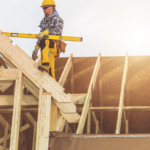Understanding Development and the Difference Between Development and Construction
In the world of real estate and urban planning, the terms “development” and “construction” are often used interchangeably. However, they refer to distinct processes that are both crucial in transforming a piece of land into a functional and valuable property. Understanding the nuances of these terms can help clarify the roles and responsibilities involved in bringing a project to life. In this article, we’ll delve into what development entails and highlight the key differences between development and construction.
What is Development?
Development is a broad and multifaceted process that involves planning, designing, financing, and managing projects that create or enhance buildings, infrastructure, and communities. It encompasses a wide range of activities, from identifying a suitable piece of land and securing necessary approvals to designing the project and managing its execution. Development is about adding value to a property through strategic planning and investment.
Key stages in the development process include:
- Land Acquisition: Identifying and purchasing a suitable piece of land for the project.
- Feasibility Studies: Conducting market research, environmental assessments, and financial analysis to determine the viability of the project.
- Planning and Design: Creating detailed plans and designs that comply with local regulations and meet the needs of future users.
- Obtaining Approvals: Securing necessary permits and approvals from relevant authorities.
- Financing: Arranging the necessary funding through loans, investors, or other financial instruments.
- Project Management: Overseeing the project from inception to completion, ensuring it stays on schedule and within budget.
- Marketing and Sales: Promoting the project to potential buyers or tenants and managing the sales or leasing process.
What is Construction?
Construction, on the other hand, refers to the actual building process where physical structures are erected, renovated, or remodeled. It is a more narrowly defined phase within the broader development process, focusing on turning the plans and designs created during the development stage into tangible realities. Construction involves a variety of skilled trades, including carpentry, masonry, electrical work, plumbing, and more.
Key stages in the construction process include:
- Pre-Construction Planning: Preparing the site, creating detailed construction schedules, and organizing resources.
- Site Preparation: Clearing the land, grading, and setting up necessary infrastructure such as utilities and access roads.
- Foundation Work: Laying the foundation, which provides the structural base for the building.
- Structural Work: Erecting the framework of the building, including walls, floors, and roofs.
- Mechanical, Electrical, and Plumbing (MEP) Installations: Installing essential systems such as heating, ventilation, air conditioning (HVAC), electrical wiring, and plumbing.
- Finishing Work: Completing the interior and exterior finishes, including insulation, drywall, painting, flooring, and landscaping.
- Inspection and Handover: Conducting final inspections to ensure the building meets all codes and regulations before handing it over to the owner or tenant.
Key Differences Between Development and Construction
While development and construction are interconnected, they serve different purposes and involve distinct activities:
- Scope and Focus:
- Development: Encompasses the entire lifecycle of a project, from conceptualization to completion, including financial and legal aspects.
- Construction: Focuses specifically on the building phase, transforming plans into physical structures.
- Activities Involved:
- Development: Includes land acquisition, feasibility studies, planning, design, financing, and project management.
- Construction: Involves site preparation, foundation work, structural building, and finishing tasks.
- Roles and Responsibilities:
- Developers: Oversee the entire project, coordinating between various stakeholders, securing funding, and ensuring the project aligns with market demands and regulatory requirements.
- Contractors: Execute the construction work, managing the day-to-day operations on-site and ensuring the building is completed according to the plans and specifications.
- Timeline:
- Development: Begins with the initial idea and continues through planning, design, and securing approvals, often before any physical work starts on-site.
- Construction: Typically begins after the development phase has provided a clear and approved plan, focusing on the physical creation of the project.
Conclusion
In summary, while development and construction are closely related, they represent different phases of bringing a real estate project to fruition. Development is a comprehensive process that includes planning, designing, financing, and managing the overall project, whereas construction is the execution phase that involves building the physical structure. Both are essential for creating successful, functional, and valuable properties. Understanding the differences between these processes can help stakeholders navigate the complexities of real estate projects more effectively.
At Premier Development, we specialize in both development and construction, ensuring that every project we undertake is meticulously planned and expertly built. Whether you’re looking to develop a new property or construct a custom building, our team has the expertise and experience to bring your vision to life.




